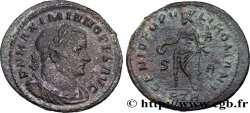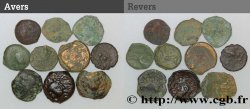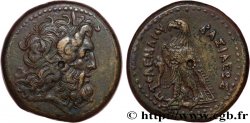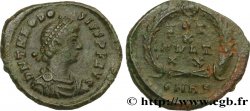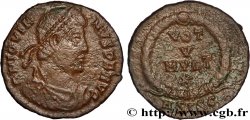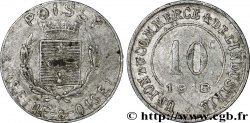brm_539575 - MAXIMIANUS HERCULIUS Follis ou nummus
150.00 €(Approx. 175.50$ | 130.50£)
Quantity
Add to your cart

Type : Follis ou nummus
Date: novmebre - décembre
Date: 307
Mint name / Town : Lyon
Metal : copper
Diameter : 25 mm
Orientation dies : 6 h.
Weight : 7,41 g.
Coments on the condition:
Exemplaire sur un petit flan parfaitement centré des deux côtés avec les grènetis complets. Beau buste de Maximien. Joli revers. Patine marron superficielle
Catalogue references :
Obverse
Obverse legend : D N MAXIMIANO P F S AVG.
Obverse description : Buste lauré et cuirassé de Maximien Hercule à droite drapé sur l’épaule, vu de trois quarts en avant (B*01).
Obverse translation : “Domino Nostri Maximiano Pio Felici Seniori Augusti”, (À notre seigneur Maximien pieux heureux auguste le plus âgé).
Reverse
Reverse legend : GENIO - POP ROM/ (AUTEL)|N// PLG.
Reverse description : Genius (Génie) debout à gauche, coiffé du modius, le Génie porte l’himation, tenant une patère de la main droite et une corne d'abondance de la main gauche.
Reverse translation : “Genio Populi Romani”, (Au Génie du Peuple romain).
Commentary
Rubans de type 3. Cuirasse et épaulière cloutées. Les ptéryges sont aussi cloutées. Petit pand de paludamentum sur l’épaule. Un changement radical intervient dans la représentation du Génie au revers. Il est maintenant normalement revêtu de l’himation au lieu du manteau tombant sur l’épaule (paludamentum). Une autre innovation est l’apparition d’un N dans le champ à droite. Nous nous sommes interrogés sur la présence et la signification de ce N. Il pourrait tout simplement signifier “Nova” (nouvelle) pour rappeler techniquement la réduction du follis du 1/40 L. au 1/408 L. Nous n’avons relevé aucune liaison de coin pertinente. Cet exemplaire est cité dans l’ouvrage de Pierre Bastien.
Type 3 ribbons. Studded breastplate and shoulder guard. The pteryges are also studded. Small patch of paludamentum on the shoulder. A radical change occurs in the representation of the Genie on the reverse. He is now normally dressed in the himation instead of the mantle falling on the shoulder (paludamentum). Another innovation is the appearance of an N in the field on the right. We wondered about the presence and meaning of this N. It could simply mean “Nova” (new) to technically recall the reduction of the follis from 1/40 L. to 1/408 L. We did not note any relevant corner bond. This example is cited in the work of Pierre Bastien
Type 3 ribbons. Studded breastplate and shoulder guard. The pteryges are also studded. Small patch of paludamentum on the shoulder. A radical change occurs in the representation of the Genie on the reverse. He is now normally dressed in the himation instead of the mantle falling on the shoulder (paludamentum). Another innovation is the appearance of an N in the field on the right. We wondered about the presence and meaning of this N. It could simply mean “Nova” (new) to technically recall the reduction of the follis from 1/40 L. to 1/408 L. We did not note any relevant corner bond. This example is cited in the work of Pierre Bastien







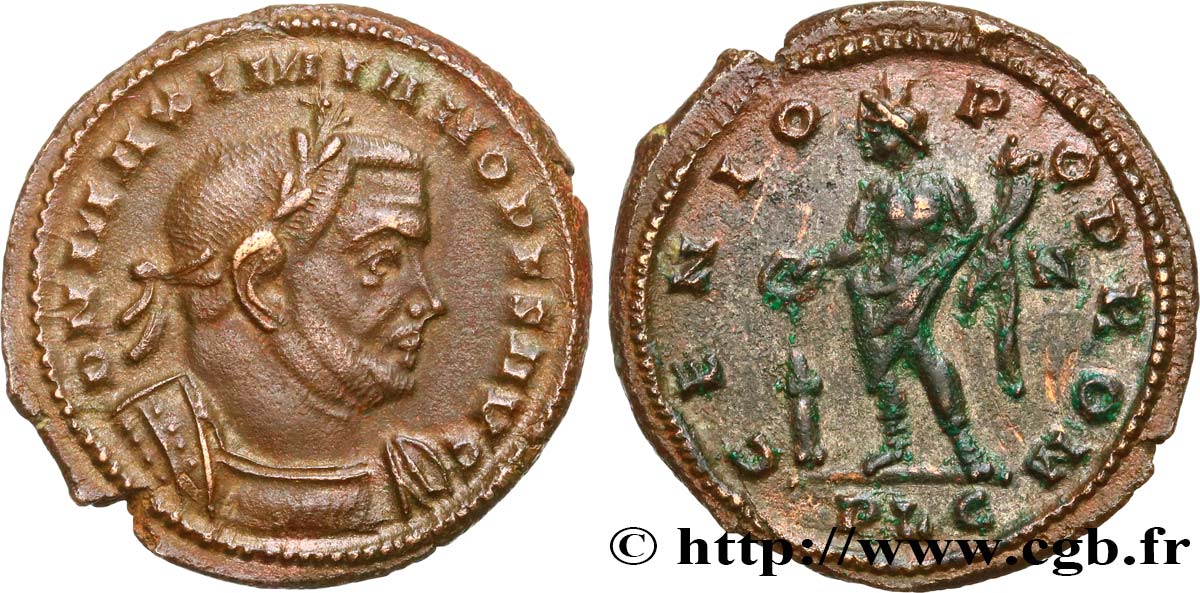
 Report a mistake
Report a mistake Print the page
Print the page Share my selection
Share my selection Ask a question
Ask a question Consign / sell
Consign / sell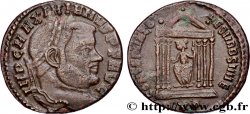
 Full data
Full data